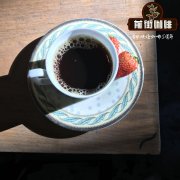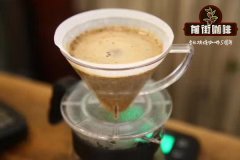Bolivian Yonggas Koraca Association small Farmer Coffee beans _ Bolivian Sun Project Coffee

Professional coffee knowledge exchange More coffee bean information Please pay attention to coffee workshop (Weixin Official Accounts cafe_style)
Bolivian Coffee-Tomorrow Sun Plan Yungas South Yungas
1650-1950m
Bolivia Sol de Manana Sud Yongas Irupana Coraca 1650-1950m
Flavor: Dry aromas of orange and plum mixed with kiwi fruit, sweet and sour orange aromas on the palate, creamy notes in the middle, sweet grapefruit and maltose at the end, balance and sourness.
If this bean is lucky enough to be in your hands, you should understand how difficult it is to get them-
Every coffee maker has a cup of holy grail in his heart, and every bean hunter has a holy place in his heart, a promised land, a dream land to go into or out of water. Bolivia is such a place.
This was the second year that we had introduced Bolivian coffee directly into the country, and after testing samples and actually introducing them in the first year, we knew that one day we would be tempted to set foot on this land, and here we were.
To enter Bolivia's Yungas Caranavi region, you must first land at La Paz International Airport, 4062 meters above sea level. Yes, you are right, it is an airport higher than our Yushan (3952 meters). I haven't been to Yushan, but I've been to Tata Jia. The wind and the headache that goes straight to the brain are definitely unforgettable. Then towards Karanabi, climb all the way to La Cumbre Pass at 4,650 meters above sea level, which is also the highest point of Death Road, and then the thrilling Death Road, all the way to Carnavi Town. The penetrating cold wind coupled with the altitude of the plateau made it almost dizzy after getting out of the car for less than ten minutes. After we took the photos here, we were exhausted. With the music and clear vision of the altitude, we meandered into a coma. Many of the photos we took were actually taken on the return journey. The altitude of the return journey was 1,600 meters from Caranaviu. After all, the old bones could still hold on for a while. However, after 3,500, although he felt that the journey was dangerous and scary, he soon fell into a coma again. After crossing La Cumbre Pass back to La Paz International Airport, I decided to stay in the capsule hotel at the airport for a few hours due to flight time factors, and almost threw it into bed after setting the alarm clock.
Bolivia can be said to be a very poor production area, with annual production declines even less than Hawaii, and the situation is so bad that the Cup of Excellence (COE) was suspended in 2009. In addition to the natural isolation of the terrain, government inaction or even obstruction is also a major factor. Most of the tree species planted here are Bourbon and Typica, which have traditionally low yields, and a few are Caturra or Catuai. However, due to lack of appropriate technical guidance and economic support, the local farms lack proper management, pruning, breeding, and elimination of too old trees. The average yield of trees is extremely low. As a result of lower yields, farmers 'incomes are even lower and they are even less able to improve, and some farms are simply abandoned. This situation is compounded by the fact that farmers in the region often face drug cultivation, which can multiply their income. As we sip the region's wonderful coffee, remember that we are not only supporting the sustainable coffee industry, but also helping fight the drug industry.
Our partner in Bolivia is Agricafe, founded by Pedro Rodriguez and his son Pedro Pablo and daughter Daniela. Agricafe can be said to be an important promoter of the revival of Bolivia's fine coffee industry, and now it is almost an important pillar of Bolivia's fine coffee industry. Several well-known roasters in Europe and America, such as Intelligentsia, Has Bean, Stumptown, Drop Coffee, 49th Parelle, Maruyama, etc., almost always purchase Agricafe beans. Pedro created several important estates in the Karanabi region, such as Finca Don Carlos and Finca Alastias. Even more exciting is the creation of Finca El Fuerte estate in the eastern region of Bolivia, in the high-altitude area of San Cruz, which has already harvested this year. After we introduced Pedro's coffee last year, we were very impressed. We went out specially and brought back the secret weapon we had been waiting for. This time, several items have arrived, which are definitely worth pondering.
In addition to owning his own estate, Pedro began El Sol de Manana (Tomorrow Sun) with a dream of reviving Bolivian fine coffee and caring for the lives of coffee farmers. The project invests a lot of effort in assisting small farmers, technical support for breeding, pruning, fertilization, harvesting and other important technologies, and purchases cherries harvested by small farmers at a higher price. Agricafe's own processing plant is used for post-processing, so that farmers 'income and quality enter a good cycle of sustainable management.
--
Bolivia is one of the five most diverse countries in the world. It is a landlocked country surrounded by five countries and deeply influenced by them. It has a population of about 10 million. The indigenous population, which accounts for about 60% of the total population, is divided into 36 ethnic groups, 26% of which are Indo-European (Mestizo), and 100 European and other ethnic groups. There is Illmani Peak at 6,462 meters, Lake Titicaca at 3,812 meters, the world's highest navigable mountain lake, and tropical rain forest!! This diverse terrain can be said to be a fine coffee micro-batch paradise.
However, Bolivian coffee production has declined year by year, from 1997 to 2014 exports fell to only 1/4, according to Roast Magazine data show that its coffee production ranked 38th and even ranked 35th behind the United States, fine micro-batches of Bolivian coffee can be said to be very rare. The reason is Bolivia's backward economic development and infrastructure. Bolivia is still the poorest country in South America. In addition, Bolivia's original unique and changeable terrain, due to poor infrastructure, has become a key factor in coffee processing, delivery and quality killer.
Bolivia's most famous production area is Caravani, which can be said to be part of Yongas region in a broad sense. The most famous one in this region is Yongas Road, nicknamed "The World's Most Dangerous Road" by the Inter-American Development Bank in 1995.
At least 600m (1, 830ft) of steep descent to North Yonggas Road, mostly single lane widths of no more than 3.2m (10ft), and the absence of guardrails along the road make it dangerous. Rain, fog and dust also reduce visibility. In some sections, the road surface is very muddy, and there are loose rocks from time to time. There is a special road rule in the area that downhill drivers do not drive to the right, but must stop at the edge of the cliff on the left and let uphill drivers pass first. In this way, when vehicles meet each other, they can stop and pass safely and efficiently. This is because Bolivia is a right-hand country, so it is mostly left-hand driving. This makes it easier for left-handed drivers to lean out of the car window to see their wheels while running this route, avoiding accidental falls into the valley below the cliff, making it safer for both sides to meet. However, there are still cases where the lane width is insufficient, especially for large vehicles such as trucks and buses, which often cannot advance or retreat. Often one of them must reverse first to create enough space for cars to meet. On July 24, 1983, a bus suddenly ran off Yongass Road and fell into a valley, killing at least 100 passengers. It is believed to be the worst traffic accident ever in Bolivia. According to statistics from 1999 to 2003, Yonggas Road has an average of 209 traffic accidents per year, resulting in 96 deaths. (This article is from Wikipedia).
Not to mention that the beans from this region must be sent all the way to Chile before they can be shipped to you, in addition to the dangerous road of death mentioned above. After many searches, we have finally found a reliable production partner. We will introduce Yungas not only Caravani's fine micro-batches of Bolivian coffee one by one this year. We hope to appreciate it together with you.
END
Important Notice :
前街咖啡 FrontStreet Coffee has moved to new addredd:
FrontStreet Coffee Address: 315,Donghua East Road,GuangZhou
Tel:020 38364473
- Prev

Kaddura Farm Solar Coffee from Estrina Farm, Bolivia _ rare Coffee Bean species in Uganda
Professional coffee knowledge exchange more coffee bean information please follow coffee workshop (Wechat official account cafe_style) Bolivia is a landlocked country, about 1/3 of the territory is the Andes, the terrain is rugged, the elevation is very high. La Paz is known as the capital with the highest elevation in the world. Although there is no beautiful tropical seaside scenery, but the lake scenery and the Andes
- Next

History of Cocoa Solar Kaddura Coffee beans grown in Alachita Manor, Bolivia
Professional coffee knowledge exchange more coffee bean information please follow the coffee workshop (Wechat official account cafe_style) newly imported beans-- Bolivian coffee beans from South America have the natural superior environment of the Amazon rainforest 90% of them are natural organic coffee this time when I got the round beans in the Las Alasitas manor, they have a good sweetness and taste delicate and smooth.
Related
- Detailed explanation of Jadeite planting Land in Panamanian Jadeite Manor introduction to the grading system of Jadeite competitive bidding, Red bid, Green bid and Rose Summer
- Story of Coffee planting in Brenka region of Costa Rica Stonehenge Manor anaerobic heavy honey treatment of flavor mouth
- What's on the barrel of Blue Mountain Coffee beans?
- Can American coffee also pull flowers? How to use hot American style to pull out a good-looking pattern?
- Can you make a cold extract with coffee beans? What is the right proportion for cold-extracted coffee formula?
- Indonesian PWN Gold Mandrine Coffee Origin Features Flavor How to Chong? Mandolin coffee is American.
- A brief introduction to the flavor characteristics of Brazilian yellow bourbon coffee beans
- What is the effect of different water quality on the flavor of cold-extracted coffee? What kind of water is best for brewing coffee?
- Why do you think of Rose Summer whenever you mention Panamanian coffee?
- Introduction to the characteristics of authentic blue mountain coffee bean producing areas? What is the CIB Coffee Authority in Jamaica?

